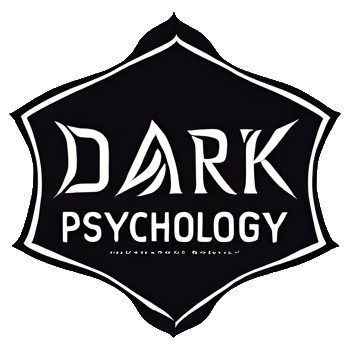The Dark Triad Test: The Dirty Dozen
In the vast landscape of personality psychology, few concepts are as simultaneously intriguing and unsettling as the Dark Triad. This term refers to a trio of socially aversive personality traits: Machiavellianism, narcissism, and psychopathy. For researchers, clinicians, and the simply curious, measuring these traits efficiently became a priority. Enter the Dark Triad Test known as the “Dirty Dozen,” a concise yet powerful tool designed to assess these dark personality facets. This article serves as your comprehensive guide to understanding this specific personality assessment, its origins, its components, and its implications.
What is the Dark Triad?
Before diving into the test itself, it’s crucial to understand what it aims to measure. The Dark Triad is not a diagnosis but a constellation of three overlapping yet distinct personality traits.
- Machiavellianism: Named after the political philosopher Niccolò Machiavelli, this trait is characterized by a cynical worldview, a focus on self-interest, manipulation, and a pragmatic lack of morality. Individuals high in this trait are strategic and skilled at exploiting others for personal gain.
- Narcissism: This involves a pervasive pattern of grandiosity, a need for admiration, and a lack of empathy. While it exists on a spectrum, the subclinical narcissism measured by the Dark Triad Test includes feelings of entitlement, superiority, and a desire for attention.
- Psychopathy: Perhaps the most feared of the three, this trait is marked by a lack of empathy, remorse, or guilt, coupled with impulsivity and antisocial behavior. In a non-clinical context, it manifests as low anxiety, fearlessness, and a callous disregard for others.
While distinct, these traits often co-occur, creating a personality profile that can be challenging in interpersonal relationships, workplaces, and social settings.
Introducing the Dirty Dozen: A Landmark in Personality Assessment
Historically, assessing these traits required lengthy, complex questionnaires. Researchers Daniel N. Jones and Delroy L. Paulhus sought to create a more efficient tool. Their solution was the “Dirty Dozen,” a 12-item Dark Triad Test published in 2014. Its name is a direct reference to its brevity—just twelve questions, or “a dirty dozen,” to get a quick snapshot of these dark traits.
The primary goal was to provide a rapid, reliable, and valid measure for research purposes where time and space are limited. Despite its simplicity, numerous studies have confirmed its effectiveness as a screening tool, making it one of the most popular personality assessment instruments in modern social psychology.
How the SD3 Fits In
It’s important to note another key player in this field: the SD3 (Short Dark Triad). Developed by the same researchers, the SD3 is a 27-item questionnaire that offers a more nuanced and detailed measurement of each trait. While the Dirty Dozen is the ultra-short form, the SD3 provides greater depth and is often considered the gold standard for brief Dark Triad assessment. Many online versions of the “Dark Triad Test” are based on either the Dirty Dozen or the SD3.
Decoding the Dirty Dozen Test Items
The power of the Dirty Dozen lies in its simplicity. The test consists of twelve statements, with four statements dedicated to each of the three dark traits. Respondents typically rate their agreement on a scale (e.g., from 1 “Strongly Disagree” to 5 “Strongly Agree”).
Here is a breakdown of the typical items, categorized by the trait they measure:
| Trait | Example Statement | Psychological Interpretation |
|---|---|---|
| Machiavellianism | I tend to manipulate others to get my way. | Measures a willingness to use strategic and deceptive social tactics for personal benefit. |
| Machiavellianism | I have used deceit or lies to get ahead. | Assesses a lack of moral compunction about using dishonesty as a tool. |
| Narcissism | I tend to want others to admire me. | Reflects a core need for external validation and a sense of superiority. |
| Narcissism | I tend to seek prestige or status. | Indicates a drive for social dominance and recognition. |
| Psychopathy | I tend to be callous or insensitive. | Probes for a lack of empathetic response to the emotions of others. |
| Psychopathy | I tend to be cynical about others’ motives. | Measures a general distrust and negative view of human nature, aligning with emotional detachment. |
By analyzing the scores across these four items for each trait, the test generates a profile indicating an individual’s relative standing on Machiavellianism, Narcissism, and Psychopathy.
Taking the Test: What Your Scores Might Mean
If you take a Dark Triad Test based on the Dirty Dozen, you will receive three separate scores. It is vital to remember that these are not binary (i.e., you are or aren’t a psychopath) but exist on a continuum. Almost everyone will have some score on each trait.
- Low Scores: Generally indicate low levels of the associated traits. You likely have a strong moral compass (low Machiavellianism), are humble (low Narcissism), and are empathetic and cautious (low Psychopathy).
- Moderate Scores: This is the average range. It suggests you possess these traits to a degree common in the general population. For instance, most people can be strategic or desire recognition sometimes.
- High Scores: Indicate a pronounced presence of these traits. High scorers might find it easy to manipulate others, feel exceptionally entitled, or remain unphased in stressful situations where others feel anxiety. It’s a sign of a potentially challenging interpersonal style.
Interpreting a High Score on a Specific Trait
A high score on one trait can manifest differently than a high score on another.
| Trait | Potential Behavioral Manifestations |
|---|---|
| High Machiavellianism |
|
| High Narcissism |
|
| High Psychopathy |
|
Applications and Limitations of the Dirty Dozen Test
The Dark Triad Test known as the Dirty Dozen has found a wide range of applications, but it’s equally important to understand its limitations.
Where the Test is Used
- Academic Research: Its brevity makes it ideal for large-scale studies exploring correlations between dark traits and other variables like political views, consumer behavior, or social media use.
- Organizational Psychology: Some consultants use it to understand workplace dynamics, though its use in hiring is highly controversial and often unethical. High Dark Triad scores have been linked to both counterproductive work behavior and, in some cases, leadership emergence in cutthroat environments.
- Self-Understanding: For individuals, it can be a starting point for introspection about their own social strategies and emotional responses.
Critical Limitations to Consider
- Lack of Nuance: With only four items per trait, the Dirty Dozen is a broad brush. It cannot capture the subtleties and sub-facets that longer tests like the SD3 can.
- Self-Report Bias: Like any self-report personality assessment, it is vulnerable to deception, both intentional and unintentional. People may answer in a socially desirable way.
- Not a Diagnostic Tool: It is absolutely critical to remember that this test does not diagnose any personality disorder. Clinical levels of narcissistic personality disorder or psychopathy require a comprehensive evaluation by a qualified mental health professional.
- Cultural Context: The interpretation of statements can vary across cultures, potentially affecting the validity of scores.
The Dark Triad in Everyday Life and Relationships
Understanding the Dark Triad is more than an academic exercise; it has real-world implications for how we interact with others.
In romantic relationships, a partner with high Dark Triad scores may be initially charming and confident (driven by narcissism), but the relationship can become characterized by manipulation (Machiavellianism) and a lack of emotional depth or empathy (psychopathy). Such relationships are often one-sided and emotionally draining for the partner lower on these traits.
In the workplace, a colleague or manager with a high score might be the one who takes credit for others’ work, engages in office politics without remorse, and makes decisions that benefit their career with little regard for the team’s well-being. However, in certain high-stakes, competitive fields, some of these traits can be misconstrued as “strong leadership.”
For a deeper dive into the research behind these traits, you can read this comprehensive review on the Psychology Today website.
Beyond the Dirty Dozen: Other Models and Assessments
The Dark Triad is a powerful model, but it’s not the only one exploring the darker sides of personality. The Dark Tetrad has emerged as an extension, adding a fourth trait: Sadism, which is the derivation of pleasure from inflicting pain on others. This highlights that the landscape of aversive personality is still being mapped.
Other significant personality assessment tools that touch on similar concepts include:
- Hare Psychopathy Checklist-Revised (PCL-R): The clinical gold standard for assessing psychopathy, but it is not a self-report test and is administered by professionals.
- Narcissistic Personality Inventory (NPI): A longer, more detailed measure specifically for subclinical narcissism.
- HEXACO Model of Personality: This mainstream personality model includes a dimension called Honesty-Humility, which is strongly negatively correlated with the Dark Triad traits.
To see the original academic publication that introduced the Dirty Dozen, you can refer to the research published on platforms like SAGE Journals. For a comparison with the SD3, the author’s manuscript provides excellent insight.
Final Thoughts on Taking a Dark Triad Test
Taking a Dark Triad Test like the Dirty Dozen can be an enlightening experience. It forces a moment of self-reflection on aspects of our personality we might prefer to ignore. Whether your scores are high, low, or average, the value lies in the insight gained. If you discover tendencies you wish to change, this awareness is the first and most crucial step toward personal growth. Remember, personality is not entirely fixed, and with conscious effort, individuals can develop greater empathy, authenticity, and ethical behavior.
Puedes visitar Zatiandrops y leer increíbles historias
Neuroscientific Correlates of Dark Triad Traits
Emerging research in neuroscience has begun to map the biological underpinnings of the Dark Triad onto specific brain structures and functions. While no single “dark personality” center exists, studies using fMRI and other imaging techniques have identified correlations that help explain the behavioral patterns. For individuals high in Machiavellianism and psychopathy, researchers have observed reduced gray matter volume and atypical activity in regions associated with empathy and emotional processing, such as the prefrontal cortex and amygdala. This neurological profile may underpin the cold, calculated decision-making and emotional detachment characteristic of these traits. Narcissism, by contrast, has been linked to structural differences in brain regions related to self-referential thinking and social evaluation, potentially explaining the heightened need for admiration and grandiose self-perception.
The Role of the Prefrontal Cortex
The prefrontal cortex (PFC), particularly the ventromedial prefrontal cortex (vmPFC), acts as the brain’s conscience and social conductor. It’s crucial for moral reasoning, impulse control, and understanding the emotional states of others. In individuals with pronounced psychopathic and Machiavellian traits, the vmPFC often shows diminished activity. This can manifest as a reduced capacity for guilt or remorse and a greater willingness to engage in exploitative behavior for personal gain. The neurological disconnect means that while they may cognitively understand social rules, the emotional weight of violating them is significantly lessened, making transgression an easier and more logical choice.
Contextual and Situational Activation of Dark Traits
A critical nuance often overlooked is that Dark Triad traits are not static; they can be situationally activated or amplified by environmental pressures. An individual may score moderately on the Dirty Dozen in a stable, cooperative environment but exhibit significantly higher levels of these traits in highly competitive, resource-scarce, or socially toxic settings. This fluidity suggests that dark personality aspects are not merely inherent but can be behavioral strategies elicited by specific contexts. Understanding this dynamic is vital for organizational psychology, as certain corporate cultures—those that foster ruthless competition and reward purely outcome-based performance—may inadvertently encourage the expression of Machiavellian and subclinical psychopathic behaviors.
| Situational Context | Most Likely Activated Trait | Potential Behavioral Manifestation |
|---|---|---|
| Intense Resource Competition | Machiavellianism | Strategic manipulation, forming exploitative alliances, information hoarding |
| Public Performance or Social Evaluation | Narcissism | Grandstanding, taking credit for others’ work, reacting negatively to criticism |
| High-Stress with Low Perceived Accountability | Psychopathy | Impulsive risk-taking, callous disregard for procedures or well-being of others |
The “Bright Side” of Dark Triad Traits in Specific Professions
While generally maladaptive in interpersonal relationships, certain professions can, paradoxically, benefit from the strategic application of these traits. The key lies in the concept of functional adaptability. For instance, in high-stakes negotiation, corporate restructuring, or crisis management, a degree of emotional detachment (psychopathy) and strategic cunning (Machiavellianism) can be advantageous. It allows individuals to make difficult, unpopular decisions without being paralyzed by emotional fallout. Similarly, a certain level of narcissistic self-belief can be a powerful asset for entrepreneurs and leaders who must project unwavering confidence to attract investors and inspire teams, even in the face of uncertainty. The distinction lies in the controlled and context-aware application versus the pervasive, dysfunctional expression seen in personal life.
Expanding the Model: The Dark Tetrad and Beyond
In recent years, psychological research has proposed expanding the triad to a “Dark Tetrad” by including the trait of everyday sadism. This addition captures the propensity to derive pleasure from inflicting physical, psychological, or emotional pain on others, distinct from the instrumental cruelty sometimes associated with psychopathy. The Dirty Dozen, as a 12-item measure, does not assess this fourth dimension, highlighting a limitation for those seeking a comprehensive profile. The emergence of online trolling and cyberbullying has been strongly linked to everyday sadism, where individuals engage in harmful behavior purely for the enjoyment of others’ distress. This suggests that our understanding of dark personality structures continues to evolve.
- Everyday Sadism: Motivation is the intrinsic enjoyment of cruelty.
- Psychopathic Cruelty: Often instrumental, used as a means to an end (e.g., intimidation, control).
- Machiavellian Manipulation: Strategic and goal-oriented, not necessarily pleasure-seeking.
Genetic and Environmental Contributions
The age-old debate of nature versus nature is highly relevant to the Dark Triad. Twin studies suggest a significant heritable component for all three traits, with estimates for genetic influence ranging from 40% to 60%. However, this leaves a substantial role for environmental factors. Childhood experiences, particularly those involving trauma, inconsistent parenting, or exposure to manipulative role models, can shape and entrench these tendencies. A child with a genetic predisposition for callousness who grows up in a nurturing environment may develop more pro-social coping mechanisms, whereas the same child in a harsh, unpredictable environment may have those dark traits reinforced as a necessary survival strategy. This gene-environment interaction is crucial for a holistic understanding.
Assessment Tools Beyond the Dirty Dozen
While the Dirty Dozen is prized for its brevity, other longer and more nuanced assessment tools exist for researchers and clinicians requiring deeper insights. The Short Dark Triad (SD3) is a 27-item inventory that provides more reliable subscale scores for Machiavellianism, narcissism, and psychopathy. For a truly comprehensive assessment, instruments like the Personality Inventory for DSM-5 (PID-5) can map traits onto a broader personality pathology framework. The choice of tool depends on the assessment’s goal: the Dirty Dozen is excellent for quick screening, while the SD3 or similar measures are better suited for research or in-depth individual analysis where the subtle distinctions between the traits are important. You can explore the research behind these models through the American Psychological Association.
Cultural Variations in Dark Triad Expression
The manifestation and social perception of Dark Triad traits are not universal; they are filtered through cultural norms and values. In individualistic cultures that prize personal achievement and competition, narcissistic traits may be more tolerated or even subtly rewarded. In collectivistic cultures, where group harmony is paramount, such overt self-aggrandizement is more likely to be socially sanctioned. However, Machiavellianism might find a more fertile ground in collectivistic settings through complex social maneuvering within in-groups. Understanding these cultural nuances is essential for global organizations and for avoiding the misdiagnosis of personality structure based on ethnocentric criteria. Cross-cultural studies, such as those compiled by the National Center for Biotechnology Information, reveal fascinating differences in how these traits are expressed and perceived worldwide.
Mitigation and Self-Regulation Strategies
For individuals who recognize these tendencies in themselves and wish to mitigate their negative impact, targeted strategies can be effective. The first step is often mindful self-observation to identify triggers and patterns. Cognitive-behavioral techniques can help challenge and reframe the core beliefs driving these traits—for example, addressing the narcissistic belief that one is inherently superior or the Machiavellian assumption that all others are pawns to be manipulated. Developing empathy through practice, such as actively listening and trying to genuinely understand others’ perspectives, can counter psychopathic and Machiavellian detachment. Furthermore, creating environments that reward collaboration, transparency, and ethical behavior can suppress the situational activation of these traits. Resources for developing these skills can often be found through reputable sources like the APA’s ethics resources.
Puedes visitar Zatiandrops (www.facebook.com/zatiandrops) y leer increíbles historias






Leave a Reply